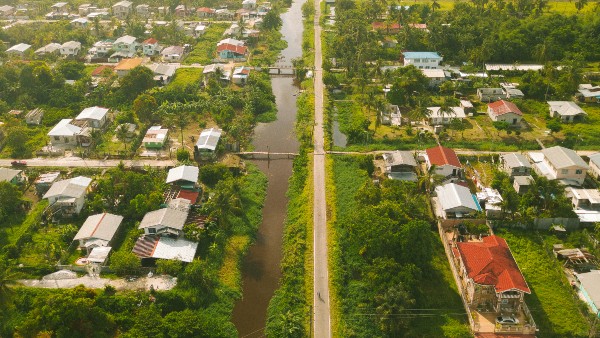The oceans are the least accessible and most mysterious regions on Earth, and humankind has a deep and eons-old relationship with the sea. Fiann Paul, FRSA, selects five stunning animated films that explore this emotional, almost mystical, bond, and warns that we abuse the oceans at our peril
I would like to recommend watching a few animations that explore the magic of the ocean. But why an animation, and why exactly is the ocean magic? Firstly, animation allows independent and film-makers and those working on smaller budgets to illustrate symbols and inner life that would cost hundreds of millions to portray in a live-action film. Meanwhile the mainstream studios that can afford live action are generally not interested in this level of depth. So animation opens the door to ambitious creators without huge financial resources.
Life comes from water and the ocean is the source of life. And many of these animations, as stories, are nothing but a metaphor for our inner development. They are maps of our inner world, where each element represents a symbolic embodiment of some part of us.
Each of these stories teaches respect for the ocean. And perhaps it’s no coincidence that, as the ocean is often seen as a female element, the heroes of all these animations are females. Perhaps it was this feminine element of water that prevented these stories from becoming merely stories of ‘solar gods’.
Ponyo: The most popular, the most expensive, and an extraordinary meeting of two worlds, not only in terms of the plot, but also production: it’s a collaboration between two polar opposites of the business - Walt Disney and Studio Ghibli. This is a very rare phenomenon in the history of cinema, and as the director was Miyazaki from Studio Ghibli, the film remains magical in its class. Meanwhile Disney pumped it up with the voices of famous actors and an unusually large budget for an animation. The story charts a meeting between young people, where one of them belongs to the oceanic mythical world and the other the human world. This meeting has its costs and consequences, and all of this alludes to our interference in the intimate life of the ocean, upsetting the natural balance. We are all now only too aware of the destructive results.
Big Fish and Begonia: Much of the story takes place in a mythical reality, in the depths of an ocean world below the human world. This perhaps symbolises the majesty of an underwater life which we never see. By sheer coincidence, the violation of the boundaries between these worlds forever intertwines the lives of two characters from these two different worlds. Fate often tries to take one of these lives, so saving both of them requires a great deal of sacrifice and puts the heroes on a path with many trials and compromises.
Long Way North: This is the most realistic of the animations listed here. In fact, it's downright hyper-realistic. A young girl with the soul of a warrior tries to regain the honor of her grandfather, an explorer who went missing during a mission to crown his career. The grandfather was the source of both her inspiration and her best memories, so the heroine pours all the feelings she felt for him into a determined and courageous quest - an epic exploration in which she aims to get where he could not reach, and to take the last step for him. Most of the action takes place on board a ship and charts her struggle with life on the ocean. Long Way North is minimalistic and almost visually primitive, but a profound, thoughtful and engaging plot takes us on a journey through Arctic Russia and Norway. The filmmakers were inspired by the expedition of Ernest Shackleton, whose ship got stuck in the Antarctic ice and whose crew survived 22 unplanned months in Antarctica.
Children of the Sea: A story about returning to early childhood (this reflects the so-called positive regression in Jungian psychology), to reclaim and lift a part of us that has fallen in the distant past and cannot develop further. But even if you’re not interested in Jung, the visual layer itself is stunning. A movie of inspiration, uplifting energy, and respect for the ocean.
Song of the Sea: A story about judgment, about two children searching for their identity in challenging circumstances. It is firmly rooted in Celtic legends and folklore. The multi-dimensionality of all Tomm Moore's animations is accentuated not only by the richness of symbolism in this movie, but also by the language which is incorporated, a language inspired by medieval Celtic iconography. The plot of this animation gradually and very unexpectedly and reveals itself, taking us to the world of Celtic myth. So first the siblings are helped by nature and animals, but when this help is not enough, a higher power takes a hand. Touched by the devotion and determination of the children, the Celtic gods themselves elect to bow to them. Ben is the older brother, and initially convinced that the story is all about him and that he is the hero. He learns gradually that it is ultimately about his little sister, Saoirse. Saoirse turns out to have a link to the world of Celtic magic, and for her sake the World cares about the siblings’ journey… and cares for them.
Fiann Paul, FRSA, is an Icelandic explorer, athlete, artist, speaker and Jungian psychoanalyst. As an ocean rower, he also holds the world's highest number of performance-based Guinness World Records achieved within a single athletic discipline

Become an RSA Fellow
The RSA Fellowship is a unique global network of changemakers enabling people, places and the planet to flourish. We invite you to be part of this change.
Related articles
-
Our yes/no voting system means nothing ever happens
Comment
Peter Emerson
Climate change tells us we must cooperate or die. But where’s the cooperation between political parties? Peter Emerson suggests a radical change.
-
Lessons from the land of many waters
Comment
Alexander Alder-Westlake
In a time of rising sea levels and flooding threats, Alexander Alder-Westlake suggests we draw lessons from a country most of us know nothing about. With its unique geography, topography and history, Guyana has much to teach the rest of the planet.
-
Regenerative organisations: the time is now, the place is here
Blog
Joanna Choukeir
Regenerative organisations are vital to our regenerative future. The time is now for the RSA to emerge as such an institution.




Be the first to write a comment
Comments
Please login to post a comment or reply
Don't have an account? Click here to register.